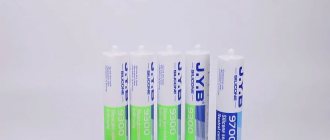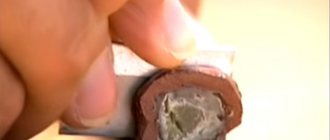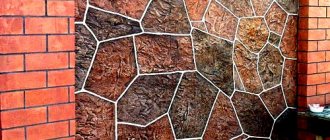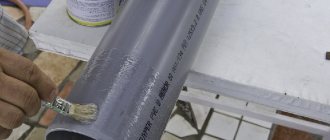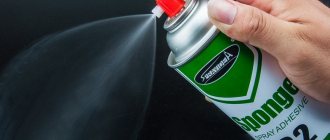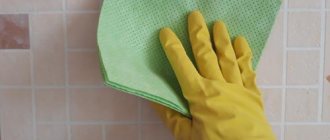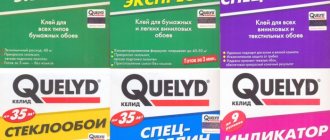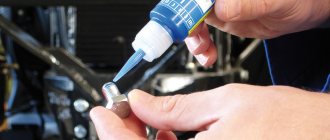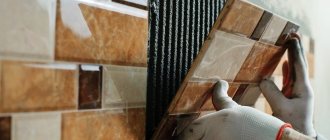How to glue silicone products - the right choice of glue
Silicone is a soft material with a plastic structure, which is widely used in a number of household and industrial industries. The question of how to glue silicone products often arises when the products are damaged.
To repair objects, you should select suitable adhesives and use them correctly. Silicone glue was invented silicone glue, which is actively used.
It is silicones that have hermetic properties, do not allow moisture to pass through, and are not destroyed by temperature influences, as well as microscopic organisms and substances.
How to glue silicone
Silicone is an artificial soft and plastic material, actively used in everyday life, in medicine, construction and other industries for the manufacture of a wide variety of products - from smartphone cases and baking dishes, to buttons on control panels on airplanes.
This proliferation of silicone products is due to a number of properties of this material:
- water repellent properties,
- resistance to oxidation and hydrolysis,
- resistance to deformation.
However, despite such remarkable properties, many people, both in everyday life and in industry, are faced with the need to glue silicone parts or glue them to the surfaces of other materials.
Not just any glue is suitable for this purpose. Let us consider in detail what compositions can be used when working with silicone.
This is interesting: How to glue decorative gypsum stone to walls
Silicone brands. Silicone - a material of the 21st century
- Although silicone was invented in the mid-20th century,
This material became truly widespread only recently. Silicone is used in technology, electronics, automotive, shipbuilding and aircraft construction, medicine, the chemical industry, the food industry, agriculture and many other areas. Even in everyday life, almost everyone has come across silicone sealants, silicone tubes, and silicone baking dishes.
What is silicone?
Currently, the term “silicon” includes: - classic silicones (silicon-organic polymers); — polyorganosiloxanes (low molecular rubbers, silicone oils and lubricants); — silanes (silicon-organic monomers). Silicone is a polymer based on a chain of silicon and oxygen molecules. Organic groups (phenyl, ethyl, methyl) are attached to silicon atoms. Groups also have connections with each other. In this case, silicone may contain several silicon-oxygen chains connected by organic groups. Thus, the chemical formula of silicone can be expressed as n, R is an organic group. The properties of silicone depend not only on what organic group is present in it, but also on the number of chains, the length of the chains, and the number of cross-links between the links. Modern computer modeling methods make it possible to predict the properties of a new polymer in advance and, conversely, to develop silicone with certain parameters.
All silicones can be divided into three large groups depending on the number of links, the degree of cross-linking of the chains with each other, the length of the chains and molecular weight. — Silicone liquids include materials with the number of links less than 3 thousand (silicone oils and lubricants, coolants, defoamers, shock-absorbing and water-repellent liquids). — Silicone elastomers contain from 3 to 10 thousand units (silicone rubbers, sealants and cold-curing compounds, hot-curing rubbers and liquid rubbers). — Silicones with more than 10 thousand units and a large number of cross-links are classified as silicone resins (compositions for applying moisture-resistant and dielectric coatings). Silicones are high-tech materials; their production requires complex chemical equipment and expensive materials, such as platinum catalysts.
Application of silicone
Silicone is actively used in construction, medicine, food
and chemical industry, in everyday life. In medicine, silicone is valued for its resistance to alcohol, hydrogen peroxide, weak acids and alkalis, neutrality and absolute non-toxicity for the human body, as well as durability and strength, which is why silicone medical tubes and silicone rubber products are replacing rubber medical tubes, bulbs, catheters, tips, plugs, etc.
In technology and industry, such properties of silicone as resistance to UV and radiation, outstanding dielectric properties, chemical inertness, and retention of elasticity at high and low temperatures, in fresh and sea water are in demand. Silicone is used to make seals, gaskets, bushings, protective masks, insulators, and hoses. Silicone stoppers are widely used for sealing chemical flasks and other containers, as well as silicone laboratory glassware and test tube racks. We sell all this equipment for the chemical industry and laboratories, as well as silicone medical tubes in a wide range and at affordable prices.
Composition and properties of silicone adhesives
Silicone adhesive has become popular due to its unique combination of qualities and properties that other types and types of adhesives do not have. It can be used simultaneously for bonding and sealing.
Basic properties and characteristics of the substance:
- Moderate thickness. The consistency of the glue allows it not to spread over the surface, while penetrating into hard-to-reach areas and areas. It easily fills cavities and irregularities in the materials being bonded.
- Wide range of applications. There are a wide variety of types and types of materials available for gluing: plastic, wood, glass, ceramics, metals, tiles, rubber and so on.
- Health safety. Silicone-based adhesive is natural and non-toxic, and complies with environmental and safety regulations.
- Simple and easy to use. The glue is easy to apply and does not flow; it does not require special skills or experience.
- Quite fast polymerization. Hardening of the adhesive joint occurs within 2-3 hours, operation can begin a day after application.
- Perfect result. The seam is transparent, waterproof, elastic, inert to temperatures and ultraviolet radiation. Additionally, the glue may have antiseptic and fungicidal properties.
- Reliability. Silicone adhesives have all the characteristics declared by the manufacturers. They are reliable, strong and durable.
Silicone for toys. Food grade silicone for making molds
The popularity of household products made from food-grade silicone is not a tribute to fashion, but a rational choice for everyone who values comfortable, functional and safe household items. Today there are no problems with purchasing ready-made products, but it is much more interesting to be creative, buy food-grade silicone for making molds, liquid or sheet, and create whatever your heart desires at home, from kitchen utensils to children's toys. Our store offers food grade silicones such as Elastolux Platinum or Tool Decor.
Features of the material
It is important to understand that silicone comes in two main types: food grade (medical grade) and technical grade. The second is widely used in the construction industry and many industries, but due to special additives it can release peroxide vulcanization products that are harmful to the body.
Food-grade silicone is a heat-resistant material that can withstand heating up to + 300 degrees, while remaining completely inert, which is due to the absence of toxic substances in its composition. The popularity of the material is explained by its resistance to extreme temperature changes and other equally important qualities:
- Absolute safety;
- high elasticity and tensile strength;
- temperature and chemical inertness;
- resistance to mechanical damage;
- durability;
- Wide range of applications.
Thanks to environmental friendliness and safety, you can use food-grade silicone for children, buy an inexpensive two-component liquid composition in the Ekaterinburg online store and start producing wonderful products with your own hands. This is not only an exciting creative process, but also confidence in the quality and safety of homemade products.
What you can do with your own hands
High-temperature silicone is widely used in households for food molds, which are used for baking original products, for ice, ice cream and deep-frozen products. Heat-resistant material allows you to create unique, original hot pads and other kitchen accessories that are regularly exposed to extremely high temperatures.
Another popular direction is the production of bright and beautiful children's toys, the model for which can be any figurines made of plaster, wood, metal or plastic. While caring about beauty, don’t forget about practicality: you can create your own pacifiers, toothbrushes, interesting chewers made of food-grade silicone, and baby sling beads that distract your baby. A special type of children's creativity is making jewelry from beads and threads, which develops fine motor skills.
Home production
To make products, you will need to buy two-component liquid high-temperature food grade silicone, dyes and have an idea of how to make this or that item with your own hands:
- select a sample from which a master mold will be made for casting;
- make formwork for casting;
- mix the components in the proportions specified by the manufacturer;
- pour the model and after 15-20 hours you will receive a ready-made mold for the production of products.
The main advantages of home-made products are confidence in the safety of the manufactured products, their exclusivity and, of course, practicality: the price of silicone pays for itself many times over. Forms and products serve for many years without losing their original impeccable qualities.
Types and features
Silicone adhesives are based on siloxane and fluorosiloxane rubbers. Their polymerization occurs due to contact with air, and the glue acquires a hard but elastic structure. There are also organic compounds in the glue that prevent the vulcanization of the glue, which is in a sealed container without access to oxygen. After opening the package, the glue molecules interact with water molecules in the air, which ensures their hardening.
Silicone adhesives can be divided into 3 groups:
- Acidic. These adhesives are cheaper, but due to their acid content they can be corrosive to metals and corrode some types of materials.
- Neutral. These adhesives are more expensive, have no disadvantages and are suitable for gluing a wide variety of materials.
- Alkaline. These adhesives have a special purpose, and they are produced on the basis of amines and silicon.
The adhesive contains additional components - plasticizers, extenders, antiseptics, catalysts, fungicides and dyes. These ingredients provide plasticity, heat resistance, adhesion, protection against fungi or bacteria, and color of the finished product. A distinctive feature of adhesive solutions of this type is the application method, release form and volume presented.
Peculiarities
Silicone items have the following properties:
- electrical insulating;
- heat resistant;
- resistant to radiation, electric fields and discharges;
- inert to the influence of microbes;
- non-toxic;
- resistant to deformation (elastic material) due to temperature changes, do not crack.
Despite such good properties, the material also has a drawback. For example, most people have difficulty gluing silicone products and attaching it to other materials. Therefore, you need to use special adhesives to achieve a certain adhesion strength.
How to glue silicone:
- Silicone adhesives and sealants.
- Cyanoacrylate adhesives.
They allow you to seal the joint and align the surfaces tightly. The compositions can be used in compounds such as silicone-metal, silicone-plastic, silicone-rubber. In the same way, they solve the question of how to glue silicone together.
Properties
The popularity of silicone adhesives is due to the good performance characteristics of the products. From a wide range of manufacturers it is easy to choose a product for gluing specific products and surfaces.
The compositions are convenient to use due to their viscous consistency, which does not flow down from vertical planes and forms a layer of uniform thickness.
Material properties:
- High elasticity, retained after drying.
- Resistant to temperature changes -50 +200°C.
- Inert to chemicals and aggressive substances.
- Insensitive to ultraviolet exposure.
- Adhesion to various types of surfaces.
- Waterproof, frost-resistant, durable.
Silicone glue fills pores and microcracks in materials well and reliably fixes fragments of products and structures. The compositions can be used for gluing products that experience mechanical and vibration loads during operation.
The disadvantage of silicone adhesives is their incompatibility with polycarbonate, polyethylene and fluoroplastic.
Transparent silicone sealant is not paintable.
Important! The glue should not be applied to wet surfaces - due to its paste-like consistency it will roll off. Therefore, before gluing, the materials must be cleaned of dirt and dried, and then glue must be applied.
Characteristics of silicone
Silicone is a soft, elastic, heat-resistant material obtained from the chemical synthesis of polymers. There are several types of silicone - liquids, elastomers, resins. But, as a rule, this name refers to rubber silicone, which has firmly come into use since the mid-20th century.
This material can be food grade or technical grade. A special feature is complete harmlessness to humans, as well as the following properties:
- ability to withstand high temperatures;
- high elasticity, absence of cracking and crumbling, flexibility;
- resistance to water, UV radiation, oxidation;
- inertness to the influence of microbes, easy disinfection;
- maintaining elasticity during temperature changes.
The use of silicone rubber is justified in medicine - silicone oilcloths, nipples, membranes, syringes and much more are made from it. Silicone is included in sealants that are used for aquariums, gluing surfaces in the bathroom and kitchen. It is used in agriculture, electronics, technology, and many other areas.
This is interesting: The device of improved plaster and the difference from regular plaster
Brief introduction to the topic
Based on the type of origin, silicones can be classified as organosilicon compounds. The properties of adhesive compositions will depend on the structure and component composition. Due to its excellent adhesion to various surfaces and low cost, silicone adhesive is popular in the construction field.
Its main advantages are:
Resistance to light, moisture and temperature changes.- Elastic structure in various operating conditions.
- High strength of polymers after 100% drying.
Silicone-based glue is available in a wide range, and therefore finding a product on sale for a certain type of work is not difficult. Such compositions are valued for their excellent sealing properties, quick drying and versatility of use. Thanks to the addition of modifying components, adhesive compositions acquire important technical characteristics.
Compound
Silicone is a durable polymer compound of organosilicon type components with a high molecular weight structure. Chemicals have a liquid-viscous texture that is visually similar to resin. The basis of silicone-type adhesive is formed by synthetic rubber - an artificial substance that occupies half of the composition of the polymer compound. Some manufacturers may make adhesives and sealants from silicone grades. The fundamental difference between them is that glue is used for strong fixation, and sealant is used to obtain a waterproof layer. The products have similar properties and compositions.
Silicone glue contains:
- The rubber base of the chemical type polymer will act as the basis of the adhesive joint.
- The strength enhancer will affect the viscosity of the substance, and will also give the required characteristics after drying.
- The plasticizer for improving the plasticity properties of the glue mass is made on the basis of silicone.
- The primer will ensure high adhesive properties of the product and adhesion to all materials.
- The vulcanizer will be responsible for the speed at which the glue dries and gives it a rubber-like structure.
- Coloring pigments are not included in all silicone products; white, black and colored dyes will mask seams and cracks.
- Fine-grained fillers (glass and quartz dust, sand) improve the adhesive properties and strength of silicone.
- Fungicidal type additives have antiseptic characteristics and also prevent the appearance of fungi and mold.
Manufacturers add catalysts to accelerate curing, as well as extenders, to some adhesive compositions. Adhesive sealants are usually produced in the form of one-component formulations for household use, and for professional work two-component substances are used.
Characteristics and description of silicone
As a result of chemical synthesis for polymers, elastic type silicone is obtained. There are several types of material: liquids, elastomers and resins. The most common type is rubber-like silicone, which has been widely used since the middle of the last century. The main characteristics of silicone include the following:
- Safety - the materials contain no toxic substances, because they are harmless to humans, animals and even the environment.
- Wide range of operating temperatures - the ability to maintain shape and quality at extreme temperatures will expand the range of applications.
- High degree of elasticity - even with prolonged use, the material will remain flexible and will not crack or crumble.
- Resistance to water - silicone products can be used in places where there is frequent contact with liquids, and even directly in an aquatic environment.
- Inertness to microbes - the influence of parasites is not able to affect the appearance and structure of silicone. Moreover, disinfection can be easily carried out if necessary.
Cyanoacrylate
Pros:
- instant hardening and bonding in a few seconds;
- strength and flexibility of the connection;
- ease of operation and application of the composition to the product;
- the seam is resistant to vibration and shock;
- do not contain solvents;
- glue materials of different compositions together without losing strength;
- resistant to high temperatures (up to 250 °C).
Minuses:
- you need to pre-treat the surface with a primer to get a good result;
- The work area needs to be ventilated.
Technology for working at home
To glue parts of silicone-type products to each other, you should follow the step-by-step instructions. Before starting work, surfaces should be thoroughly cleaned of dust and dirt, and then allowed to dry. The product to be glued must be covered with a thin layer of adhesive solution and applied to the second surface. If necessary, you can combine silicone with metal, and the action plan will be similar. Many types of adhesives will dry at room temperature. It is best not to use a glued product within 24 hours after completing the work. In case of uneven seams, it is allowed to separate the surfaces using chemical means and carry out the work again.
Description and characteristics of silicone
As a result of the chemical synthesis of polymers, elastic silicone is obtained. There are several types of material - elastomers, liquids, resins. The most common is rubber-like silicone, which has been widely used since the middle of the last century.
The main characteristics of silicone include the following:
- Safety. The material contains no toxic substances, so it is harmless to humans, animals and the environment.
- Wide operating temperature range. The ability to maintain shape and quality at extreme temperatures expands the range of uses.
- High elasticity. Even with prolonged use, the material remains flexible and does not crumble or crack.
- Water resistance. Silicone products can be used in places where there is frequent contact with liquid, as well as directly in an aquatic environment.
- Inert to microbes. Exposure to parasites does not affect the structure and appearance of silicone. In addition, disinfection can be easily carried out if necessary.
Safety precautions when working with glue
When gluing silicone products, it is recommended to familiarize yourself with safety precautions in advance. Following simple rules will help you avoid dangerous situations. Basic safety rules include the following:
- work with glue is carried out in a well-ventilated area;
- to avoid inhaling vapors of the substance, you can use a respirator;
- To protect hands from accidental contact with the adhesive solution, wear rubber gloves;
- throughout the entire working process, the ambient temperature should be within 15-25 degrees;
- if the humidity level in the room exceeds 60%, it is better to carry out the work in another place, as this may affect the quality of the seam.
What can be glued with such compounds?
What products can be glued?
If you follow the standard rules, you will be able to glue any products, including watch straps, children's toys, construction components (bushings or seals), and even medical tubes. The result of the repair work will directly depend on many factors, and this includes the current condition of the product, the degree of damage, the adhesive solution used, and how carefully the work was carried out.
Selection of adhesive compositions
For the restoration of products made of silicone, several types of adhesive compositions are suitable. To choose the right compositions, it is recommended to familiarize yourself with the characteristics of the available options and settle on what you need, taking into account the characteristics of the product. As a rule, silicone sealants or cyanoacrylate adhesive are used to hold parts together. Such solutions help to reliably eliminate defects, as well as firmly join surfaces.
An excellent gluing result will be ensured by an adhesive composition that meets the following requirements:
- Strength and elasticity - the composition creates a seam that will not be damaged by external influences and vibration-type loads.
- The optimal consistency will be the thickness of the mixture to get into hard-to-reach areas, as well as filling small cracks.
- The ability to withstand high temperatures - it, like silicone itself, must withstand heat without losing any quality.
- Ease of use – ease of use will be affected by the packaging of the substances and the method of application.
- Fast polymerization - high-quality solutions can harden in just a couple of hours.
Now in more detail about all the compositions.
Silicone type adhesives and sealants
There is glue for gluing silicone to silicone. It is a flexible silicone type sealant made from silicon, which is found in the form of sand or quartz. To begin with, polymers are made from the material, which will act as a base for the sealant. The source material determines the main parameters of the sealant. The main characteristic will be high tensile capacity, and this will make it possible to use the sealant for work with movable types of joints. The material will compensate for deformation at the joints and will not be destroyed by outside influence.
The sealant can be used for industrial and domestic purposes, because it is able to withstand ambient temperatures ranging from -50 degrees to +200. Special types of sealed products with increased thermal stability can heat up to +300 degrees. There is still the possibility of wide application, and this is due to the sealant’s resistance to the negative effects of ultraviolet rays, humidity and cleaning agents.
Cyanoacrylate compounds
The base of cyanoacrylate solutions are esters of alpha-cyanoacrylic acid. As additional components, it will be possible to use plasticizers needed to adjust the viscosity, as well as stabilizers to improve adhesion. Depending on the brand of cyanoacrylate type solution, it may contain modifying components that are responsible for the resistance of the resulting seam to heat and moisture. Such compositions help demonstrate immunity to organic type solvents and electrical insulating properties. To dissolve the applied adhesive after hardening, treatment with special substances is needed. The consumption of the adhesive composition is slow, and this reduces the cost of restoration work.
Most popular brands
When choosing an adhesive composition, it will not be superfluous to study products from the best manufacturers. Among the most popular brands there will be options with an affordable price and optimal characteristics for working with silicone products.
V A L MEX INs c38
This adhesive composition from the German company Rema is required for express repairs and also for the restoration of silicone products, regardless of size and condition. The solution will be consumed economically and convenient to use. This glue is made based on three types of solvents.
CO S MO F E N CA 12
This composition will be a one-component liquid adhesive composition with a transparent structure and low viscosity. The resulting adhesive joint is resistant to precipitation and temperature changes. The purpose of the solution is not limited to household repair work, and it has found application in the industrial field. Due to the fact that it is possible to bond many types of surfaces, the product is considered universal. The adhesive composition is perfect for working with small particles of silicone products and when you need to quickly fix surfaces. It is not recommended to use this brand of glue only when working with porous surfaces and products that have been in contact with water for a long time.
E L A S TO SIL E43
This silicone adhesive is a one-component, self-leveling rubber that cures at room temperature and has high mechanical properties. The substance is used for working with silicone products and for gluing silicone to surfaces made of other types of materials. Features of the brand's products include:
- Adhesion without the use of a primer.
- Acetate hardening method.
- Self-leveling after everything is applied.
A universal type solution will provide electrical insulation and sealing, and is also able to withstand extreme temperatures and vibration loads, and will not lose its original characteristics over time. Thanks to the packaging with tips, the solution will be convenient for spot application.
Precautions when working with adhesive composition
When gluing silicone products, it is recommended to familiarize yourself with the safety rules in advance. Compliance with even the simplest rules helps to avoid dangerous situations, and the following can be added to the basic safety rules:
Work with the adhesive composition should be carried out in a well-ventilated area.- To avoid inhaling fumes, you can use a respirator.
- To protect your hands from contact with the glue, you should wear rubber gloves.
- Throughout the entire work process, the ambient temperature should be from +15 to +25 degrees.
- If the humidity level inside the room is more than 60%, the work should be carried out in another place, because this can affect the quality of the seam.
And now a little about how to apply the product.
What products can be glued
If you follow the standard rules, you will be able to glue any product, including a watch strap, children's toys, construction components (seals, bushings), and medical tubes. The result of the repair directly depends on a number of factors, including the current condition of the product, the degree of damage, the adhesive solution used and the accuracy of the work.
See also
How and how to properly seal a battery with your own hands
How to choose silicone glue
The adhesive should be selected based on the scope of its use.
Universal . This adhesive can be used for external and internal work, for the purpose of fastening elements and sealing them, for crafts and repairs. It retains its properties when heated and cooled, so it can be used for gluing radiators and heating devices. This adhesive is ideal for elements that are subject to deformation during operation - door and window openings, tiles and tiles, glass, plastic, polymer and ceramic products.
For outdoor work . This adhesive contains an acetic hardener, which gives it a characteristic odor. It is used outdoors and is suitable for gluing ceramics, wood, glass, fabrics, rubber, pipes and plastic. On some metals, the adhesive mass can cause corrosion, so it is rarely used to join metal elements.
Sealant . This is a special group of silicone adhesives suitable for sealing seams that are regularly exposed to liquids and moisture. Only silicone sealants can create a reliable, strong and durable waterproof connection.
Aquarium . This is a special non-toxic glue used for repairing aquariums. It is resistant to water and ultraviolet radiation. The fish-shaped marking on the packaging means that the adhesive composition is suitable for use in this area.
Sanitary glue . It contains bactericidal components that prevent the formation of fungi and mold. The main area of its application is rooms with a high degree of humidity - bathrooms, kitchens and toilets.
Automotive . These adhesives are used as sealants and gaskets in the repair of automobiles and equipment.
High temperature adhesive . It is represented by special silicone sticks that melt at elevated temperatures. The glue is distributed using a heat gun. Among its advantages are its viscous and sticky structure, flexibility after hardening, and inertness to aggressive influences.
Popular brands and price
The cost of the products is usually in the range of 200-500 rubles per package of 330-500 ml, the price greatly depends on the manufacturer. Glue in a package of 10-30 ml is much cheaper - in the range of 20-100 rubles.
Below are well-known brands sold in stores:
- RTV 118Q. This is food glue that can come into contact with food and not cause harm to health. It is used mainly for gluing dishes and ceramics; in everyday life it is useful for repairing remote controls and other rubber products. Withstands temperatures up to +260 degrees.
- Jaba. An excellent product for aquariums, harmless to living creatures and plants. You can glue glass, ceramics, and seal small leaks.
- Loctite 5699 Neutral grey. It is used for the manufacture of gaskets; they can be used to glue rigid flange bases, seal cast housings, and car transmissions.
- "Pentelast 1143". Multifunctional acid adhesive, has exceptional strength, intended for all materials except metal.
- DoneDeal. Heat-resistant silicone adhesive-sealant, used in car repairs, withstands vibration, high temperatures, humidity, and chemicals.
- "Avtogermesil". Oil-resistant, water-resistant adhesive, sold in volumes of 70-160 g and 5-8 kg. Used for gas tank, engine, body work, radiators, can be used in cooling system.
If the products are used carefully, the adhesive seam will last for many years, but, if necessary, it can always be replaced with a new layer of product.
Very often situations arise when it becomes necessary to seal seams to protect areas from moisture penetration. To minimize the risk of such problems, you should use a specialized tool. Silicone sealant is suitable for this work, since it can be used to create a high-quality and waterproof connection between surfaces.
Video text
Welcome to Children's toys - unboxing and demonstration - Toys Russia!
Here you will find great toy unboxings, demos and reviews in Russian language. Toys include: PLAY-DOH, Disney Cars Toys, Cookie Monster, Sesame Street, Angry Birds, Lego, Playmobil, SpongeBob, Barbie, Marvel Spider Man, Pixar Cars, Hello Kitty, Toy Story, Iron Man, Disney toys, Peppa Pig, Batman, Disney Princess, Cinderrella, Mickey Mouse, Dora the Explorer, Thomas Tank, Transformers, Star Wars, Monsters University, Smurfs, X-Men, Lalalooplsy, Teletubbies, My Little Pony, Winnie the Pooh and much more!
If you love toys: SUBSCRIBE for free!
Disclaimer: This YouTube channel is independent. LEGO®, PLAYMOBIL®, PLAY-DOH®, HOTWHEELS®, DISNEY®, MY LITTLE PONY®, BARBIE® and all other toy brands shown in this chanel are trademarks and brands which belong to the respective toy manufacturer. This channel is neither sponsored nor endorsed by any one of them.
- Author: Maria Sukhorukikh
- 5
- 4
- 3
- 2
- 1
Glue brands
Now you can start choosing glue. Experts prefer the following brands, which can be found in departments of specialized stores:
- COSMOFEN CA 12 (recommended for use in tandem with COSMOPLAST 588 primer) is an adhesive from the German company Weiss. It is used not only for gluing silicone parts and plastics, but also for working on metal, working with ceramics, rubber surfaces and other materials.
Glue Cosmofen (click to enlarge)
It has a number of advantages: strength, resistance to high and low temperatures and ultraviolet radiation. Dries in 10-15 seconds. The tube has a dispenser, which makes work easier. How to glue parts: just apply a certain amount of the product to a clean, dry surface, connect the glued parts and hold for a few seconds until gluing.
- VALMEXIN sc 38 is a German adhesive manufactured by REMA. In addition to gluing, it allows you to seal cracks, restoring products made of silicone, PVC, rubber and latex. Does not lose properties even if the glued part is constantly in water.
After applying the silicone, you need to hold the glued areas for 1-3 minutes, and after 30 minutes the part can be used.
- Permabond 2050 (with Permabond Polyolefin Primer) is an adhesive containing cyanoacrylate. Dries instantly; You can glue flexible joints, which often cause problems. The glued seam is resistant to shock and vibration.
Permabond glue is suitable for silicone (click to enlarge)
Before application, disinfect and dry the surface, and then apply a couple of drops to the part and glue, holding for a couple of seconds.
Attention: remember safety precautions!
Bonding should be carried out in a well-ventilated area below 25˚C. Do not allow the glue to come into contact with the skin and mucous membranes (for this you need to wear gloves and, possibly, special glasses). Do not work for more than 20 minutes.
What silicone products can still be glued, see the video:
Advice from professionals
- Carefully study the labels on sealant containers from manufacturers. You can find a lot of useful information on it: what kind of work the composition is intended for, under what conditions it can be used, how the seam will react to temperature changes, etc.
- Sealants must be used strictly for their intended purposes, otherwise the applied composition will soon collapse.
- It is easier and more convenient to apply sealant using a special mounting gun.
- If the sealing compound sticks to the rubber spatula (during installation), the tool can be slightly moistened with soapy water.
- Often sealant, especially the first time, is applied carelessly. It is not recommended to wipe off excess immediately. It is better to wait until the seam has dried, then carefully cut off the sealant using a knife or spatula and remove unnecessary glue from the surface.
When choosing, you should decide what type of sealant for plastic is needed: waterproof, UV-resistant, durable, or most importantly, it should be colored. It is necessary to provide for everything where, how and under what conditions it will be used. And from this you can purchase the necessary sealing composition for a plastic surface, which will last for a long time.
Rules for caring for an anti-stress toy
Children love squishies, so you need to keep an eye on the cleanliness of the product. A figurine purchased in a store can be washed by hand with shampoo, rinsed under a tap and dried in a draft. A heavily soiled toy should not be wrung out, but it should be wrapped in a fluffy towel to absorb water.
The paper skew gets wet, loses its attractive appearance and may tear. Foam rubber is not afraid of moisture, but before washing the toy, you need to find out what it is filled with inside.
Most anti-stress pillows and figurines sold in stores are filled with polystyrene balls that do not absorb moisture. There is no need to remove them from the toy before washing, but you need to check if there are any holes in the base.
Squishies can be machine washed in a pillowcase or cover.
It is better to pour gel into the tray than to pour powder. No bleach should be added. It is advised not to heat water above 40 °C. The number of revolutions for spinning is set at 400–600. If squishies are filled with seeds or shells, they are emptied from the cover before washing. The stain on the toy is first rubbed with soap, soaked for half an hour, and then placed in the drum of the machine.
They dry squishies on the balcony, outside, but not in the sun or on the radiator. It is advised to lay out such things horizontally. Proper care of the anti-stress toy and following the recommendations allow you to maintain its original appearance for a long time:
- After washing, apply a few drops of sage or lavender essential oil to the product, which gives the figurine or pillow a pleasant smell.
- It is advisable to wash squishies every 2 months.
- To prevent the toy from losing its rich color, you need to add ammonia at least once when washing.
The filler can be changed; such material is also sold in stores. It is advisable to carefully read the labels on toys, which tell you how to wash them - in the machine or by hand.
If lubricant is not available
Using silicone grease is an ideal and correct option for installing a sewer pipe. And its absence would be a direct indication for the cessation of assembly work in any other country. Our craftsmen find simple and affordable substitutes, which also facilitate installation and do not harm the rubber seal. What can be used to connect sewer lines in the absence of lubricant?
- any animal or vegetable fat. It could even be vegetable oil, which can be found in any home;
- moisturizing creams, if, of course, you don’t mind;
- soap solution;
- liquid detergent.
What is better not to use when joining a pipe?
- solvent;
- WD-40;
- adhesive seals.
These substances can damage the rubber rings. Even wd-40, beloved by all motorists, contains a solvent (white spirit), therefore, it can lead to rapid wear of rubber. And joining with adhesives will make it difficult to repair and dismantle the pipe in the event of an accident.
This proliferation of silicone products is due to a number of properties of this material:
- water repellent properties,
- resistance to oxidation and hydrolysis,
- resistance to deformation.
However, despite such remarkable properties, many people, both in everyday life and in industry, are faced with the need to glue silicone parts or glue them to the surfaces of other materials.
Not just any glue is suitable for this purpose. Let us consider in detail what compositions can be used when working with silicone.
How to remove excess sealant from a surface?
During the work process, there are times when the material was applied in large quantities or dripped onto the surface. There are several options for how to remove sealant:
- If the surface is not receptive to white spirit, dip a cotton pad into the liquid and carefully wipe off any excess adhesive. This method is acceptable if the material has not yet hardened.
- You can purchase Penta-840 silicone remover at a hardware store. Under the influence of this product, the dried sealant will simply dissolve.
- To remove excess adhesive, soak a rag in soapy water and wipe over the surface.
- If the sealant has hardened, it can be removed with a knife or spatula. But this can scratch the coating.
The scope of application of silicone sealant is wide and varied. It will cope perfectly with any task, and most importantly provides a high-quality waterproof connection.
Is it possible to fix a squish?
Toys that are crushed and squeezed in the hands to calm down and improve a bad mood are made from foam sponge, plastic bags, silicone and plasticine, from old children's tights or socks. Fill the squishies:
- cotton wool:
- padding polyester;
- cereal;
- cellophane.
The rubber ball bursts, the paper and fabric are torn, the tape comes off, and the toy becomes unusable.
If the squishies can no longer be crushed and squeezed, you can make a figurine with smaller dimensions by cutting off the ends.
